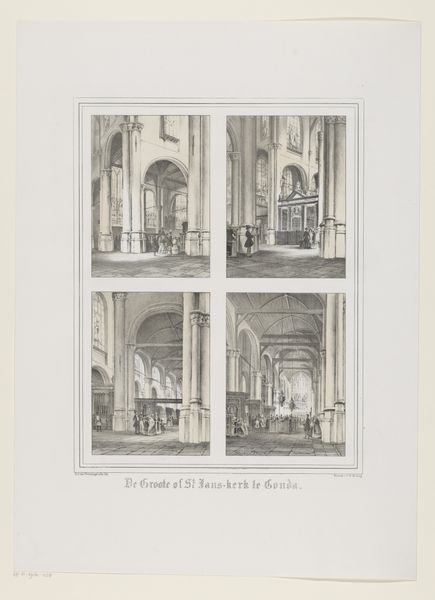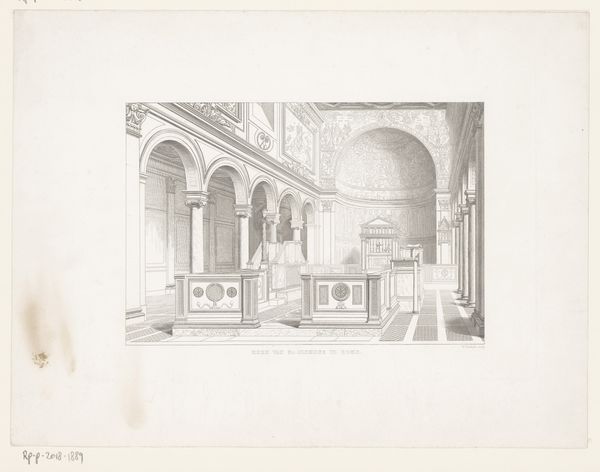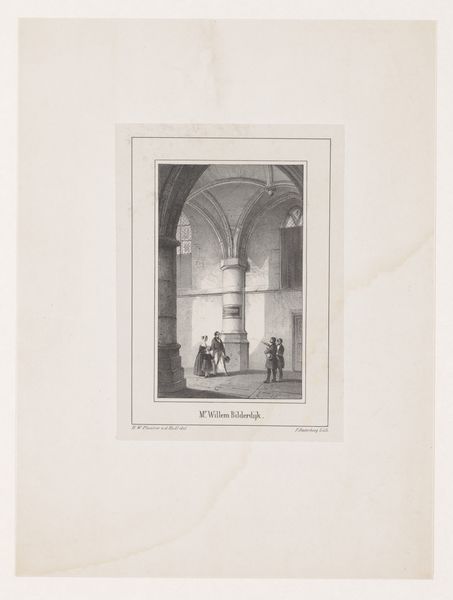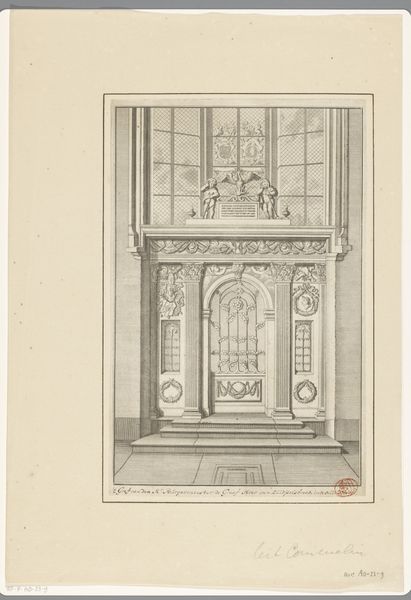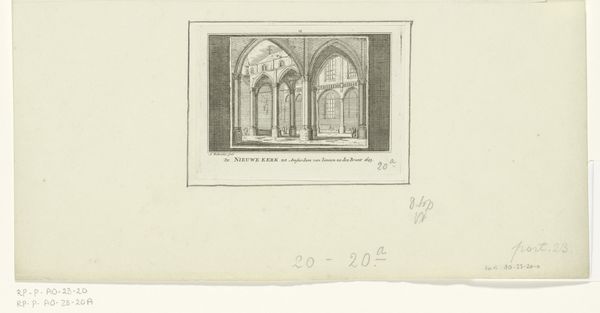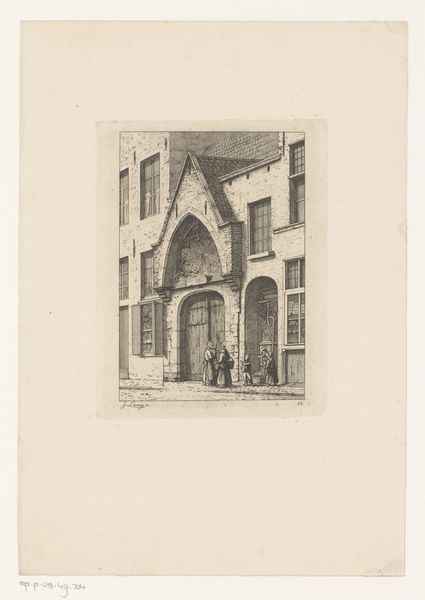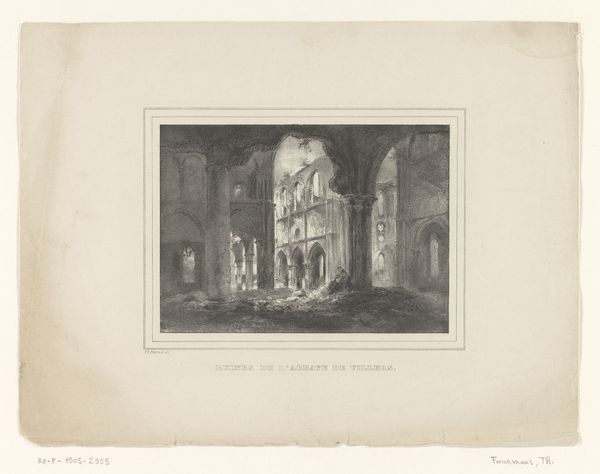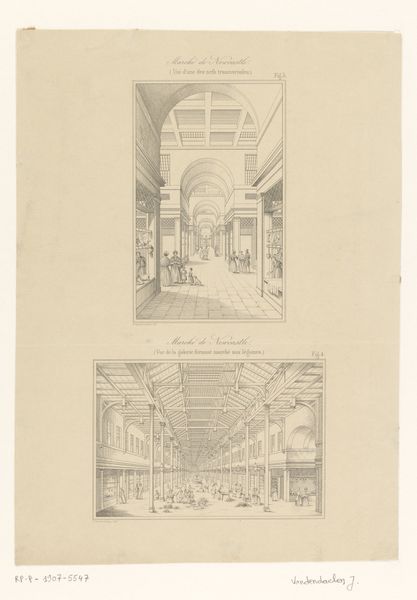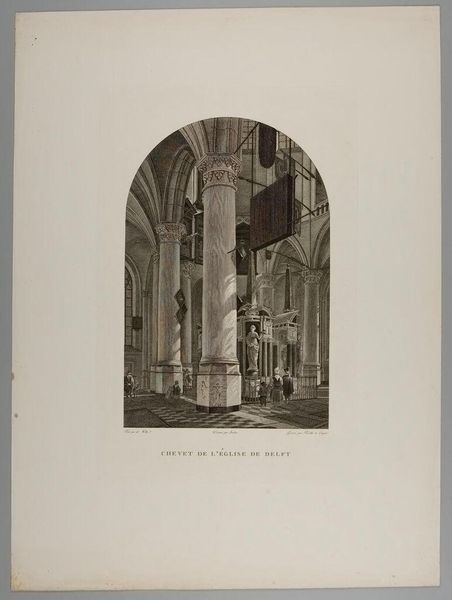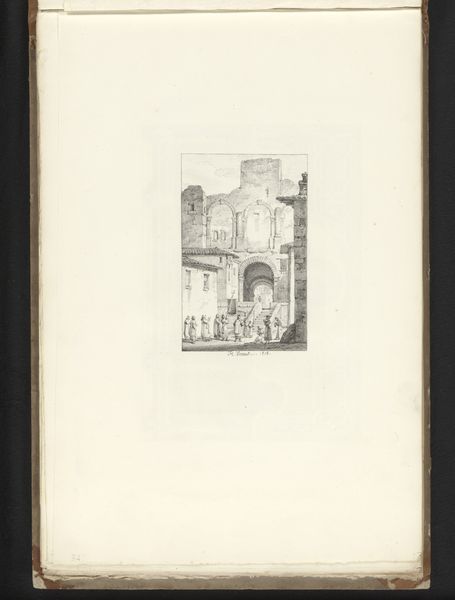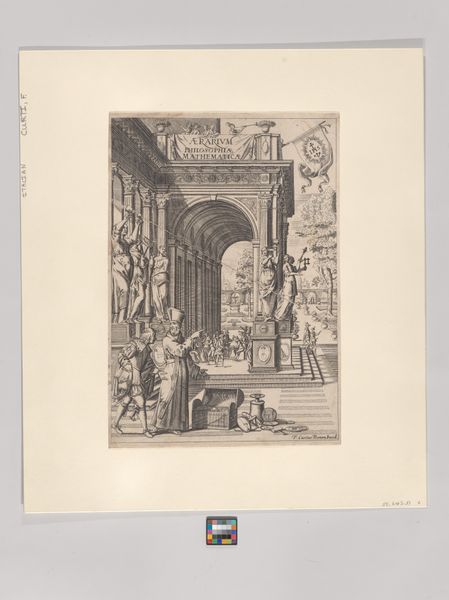
Vier gezichten op het interieur van de Sint-Janskerk te Gouda 1847 - 1865
0:00
0:00
print, engraving
# print
#
landscape
#
perspective
#
cityscape
#
northern-renaissance
#
engraving
#
realism
Dimensions: height 633 mm, width 461 mm
Copyright: Rijks Museum: Open Domain
Editor: So, this print by Dirk Johannes van Vreumingen, dating from 1847 to 1865, presents four views of the interior of the Sint-Janskerk in Gouda. I'm really struck by the precision of the lines. What elements stand out to you? Curator: The printmaking process itself is key here. Consider the labor involved in creating such detailed engravings, each line meticulously etched to replicate the architectural grandeur. It becomes a dialogue between the artist, the tools, and the social demand for these kinds of images. How do these views compare to a contemporary photograph of the church? Editor: Well, a photograph might offer a more "realistic" representation. Here, there's an emphasis on idealised perspective, perhaps even manipulating reality for visual effect. Are those figures proportionally accurate to the architecture? Curator: Exactly! The print isn't just a record, it’s a crafted commodity. These prints would be consumed by a particular social class, acting as a status symbol – a visual marker of access to culture and religious importance. Think about the economy of printmaking at the time. What kind of workshops and labour relations produced works like this? Editor: So it's not just about appreciating the aesthetics, but also about unpacking the context of its creation and consumption. The way that the work and materials intersected with social stratification...fascinating. Curator: Precisely. The church isn't just a place of worship. In this representation it also a symbol of societal power meticulously crafted for both religious and commercial consumption. Hopefully this has given you new perspectives on the print medium. Editor: Absolutely! I will now definitely think about the material production of an artwork and not just its surface when examining art. Thanks!
Comments
No comments
Be the first to comment and join the conversation on the ultimate creative platform.
